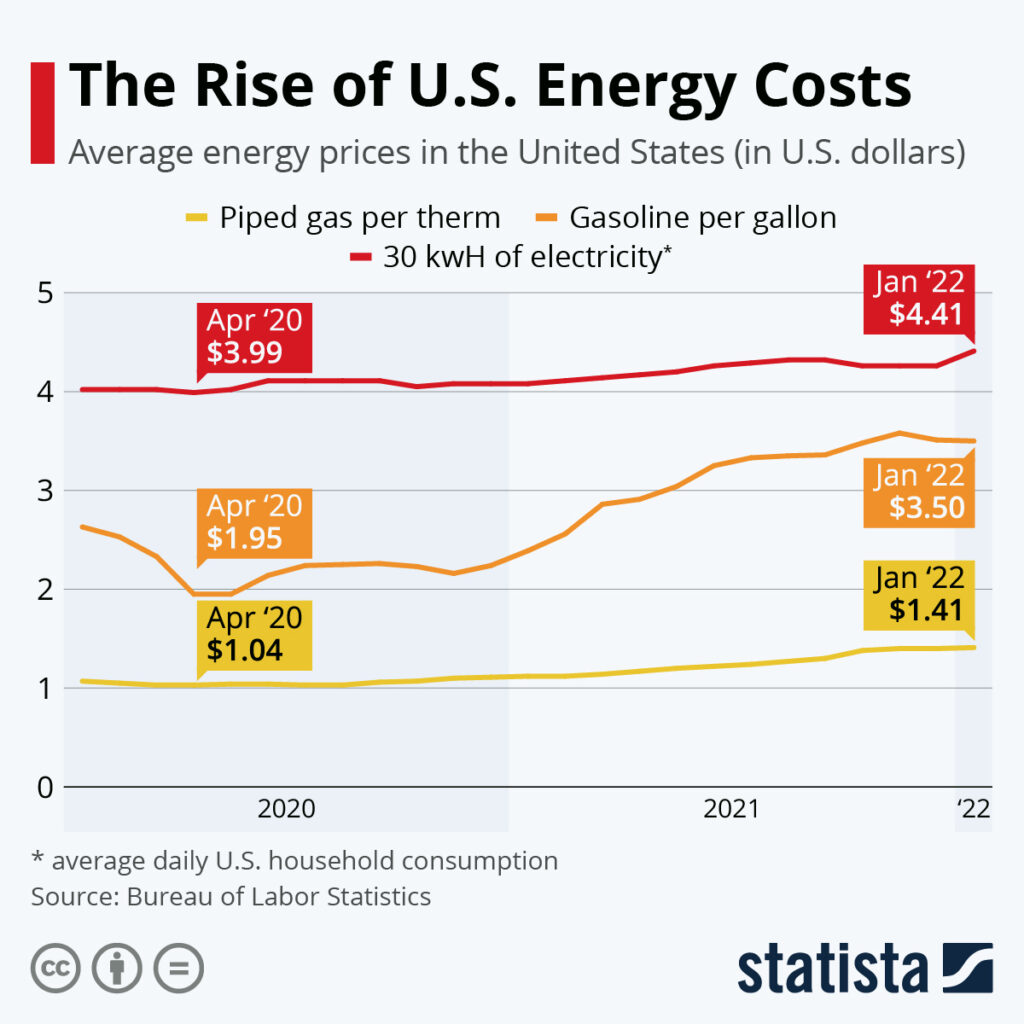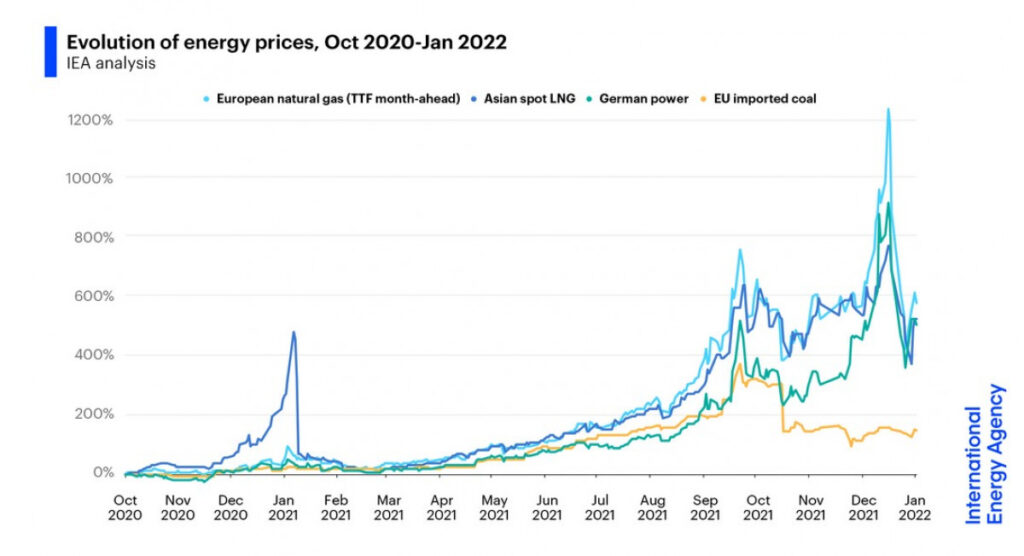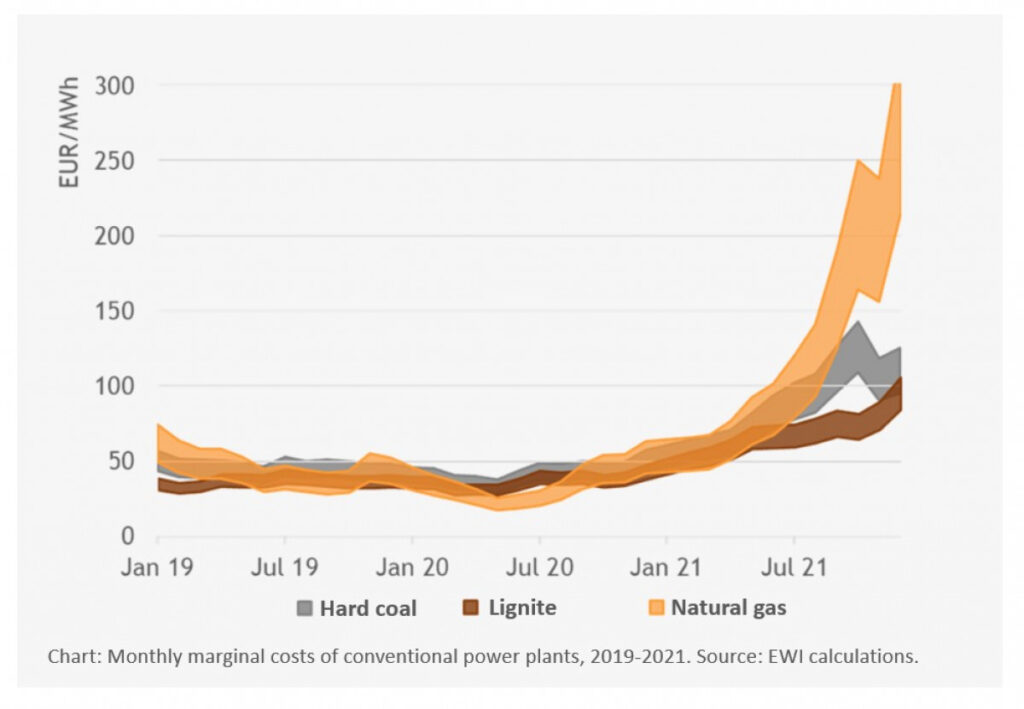Are you aware of the staggering surge in online fundraising campaigns aimed at alleviating the burden of skyrocketing energy bills? According to figures from GoFundMe, there has been a remarkable 680% increase in people mentioning “energy bill” or “energy bills” in their fundraisers. The rise in energy costs has not only hit households hard but has also impacted charities and organizations that are now relying on crowdfunding to cover their mounting energy expenses. As a result, the need for food banks and kitchens has grown, exacerbating the strain on resources as food donations have decreased.
Households with children are particularly struggling, with 36% finding it difficult to afford their energy bills. Moreover, the impending energy price guarantee increase set for April is expected to further plunge numerous families into debt. It’s distressing to learn that individuals are having to ration their heating, with those on the lowest incomes and in poorly insulated homes being hit the hardest. In light of these circumstances, charities and organizations are urgently calling for increased support and action to combat fuel poverty, guaranteeing that everyone has access to affordable energy for their essential needs.

This image is property of static.independent.co.uk.
Introduction
Rising energy costs have become a growing concern for households around the world. As prices continue to soar, many families are finding it increasingly difficult to keep up with their energy bills. This has led to a significant surge in online fundraising campaigns aimed at helping individuals and families cover their energy expenses. In this article, we will explore the reasons behind this increase, the impact it is having on households, and the actions being taken to address this pressing issue.
Increase in Online Fundraising Campaigns for Energy Bills
Online fundraising has become an increasingly popular method for individuals and organizations to gather support for various causes. In recent years, there has been a noticeable surge in campaigns specifically aimed at helping people cover their energy bills. This rise can be attributed to the ever-increasing cost of energy and the financial strain it places on households.
Reasons for Increase in Online Fundraising
The steep increase in energy costs has left many individuals and families struggling to afford their basic needs. As a result, turning to online fundraising platforms has become a viable solution for those in need. By utilizing these platforms, individuals can reach a large audience and receive support from generous donors who understand the challenges faced by households burdened by high energy bills.
Figures from GoFundMe
GoFundMe, one of the leading crowdfunding platforms, has provided some insightful data on the rise of energy bill-related campaigns. They have reported a significant increase in the number of campaigns created specifically to help with energy costs. The data reinforces the notion that more and more individuals are relying on online fundraising to alleviate the financial strain caused by rising energy prices.

This image is property of cdn.statcdn.com.
GoFundMe Data on Energy Bill Campaigns
According to GoFundMe, the mentions of “energy bills” in campaign descriptions have seen a substantial percentage increase. This demonstrates the growing awareness and urgency surrounding the issue of rising energy costs. Individuals and families are increasingly turning to online fundraising as a means to seek assistance in paying their energy bills, highlighting the significant impact these costs are having on households.
Charities Turning to Crowdfunding for Energy Costs
Charitable organizations have also recognized the dire need to address the issue of skyrocketing energy costs. To supplement their limited resources, many charities have started utilizing crowdfunding platforms to raise funds specifically for energy expenses. This approach allows them to alleviate some of the financial burdens faced by vulnerable households and ensure that essential energy needs are met.
Need for Additional Funding
Given the limited resources of many charitable organizations, additional funding is crucial to support individuals and families struggling with energy costs. Traditional funding sources often fall short, and charities have seen the potential of crowdfunding as a supplementary means of raising the necessary funds. Through engaging the online community, charities have been able to garner support and provide much-needed assistance to those in need.
Examples of Charities Using Crowdfunding
Numerous charities have already embraced crowdfunding as a means to meet the growing demand for energy bill assistance. One such example is the XYZ Charity, which established an online fundraising campaign to help low-income households pay their energy bills during the winter season. Through the generosity of online donors, the campaign generated enough funds to help dozens of families stay warm during harsh winter months.

This image is property of www.cleanenergywire.org.
Effectiveness of Crowdfunding for Energy Costs
Crowdfunding has proven to be an effective solution for charities seeking additional funds to support individuals and families struggling with energy costs. The online nature of these campaigns allows for quick and widespread dissemination, reaching potential donors far and wide. Additionally, the transparency and accountability that can be realized through online platforms provide reassurance to donors that their contributions are making a genuine impact.
Rise in Demand for Food Kitchens
The increase in energy costs not only affects individuals’ ability to pay their bills but also has a ripple effect on other aspects of their lives. One of the stark consequences of rising energy costs is the heightened demand for food kitchens. As households allocate more of their limited resources towards covering energy expenses, their ability to afford basic necessities such as food diminishes.
Increased Dependency on Food Banks
In addition to food kitchens, there has been a significant uptick in reliance on food banks due to the strain imposed by escalating energy costs. Many households find themselves in a challenging situation where they must choose between heating their homes and putting food on the table. As a result, families who would not have sought assistance from food banks in the past are now turning to them for support.
Impact of Rising Energy Costs on Food Insecurity
The combination of rising energy costs and increased dependency on food assistance programs has resulted in a worrisome rise in food insecurity. Families struggling to afford their energy bills often face difficulties in ensuring a steady and nutritious food supply. This not only compromises the health and well-being of individuals but also adds an extra layer of stress and anxiety to their daily lives.

This image is property of www.cleanenergywire.org.
Decrease in Food Donations
While the demand for food assistance has increased, there has been a noticeable drop in food donations. This can be attributed to the fact that households themselves are facing financial constraints and may not have surplus resources to donate. Furthermore, the redirection of funds towards energy costs has left less disposable income available for charitable giving.
Reasons for Decreased Donations
The decrease in food donations can be seen as a direct consequence of the rising energy costs. As households struggle to make ends meet due to skyrocketing energy bills, their ability to contribute to food banks and other charitable organizations diminishes. Financial limitations make it increasingly difficult for individuals to allocate funds towards donations, resulting in a decline in food supplies available to those in need.
Consequences of Reduced Donations
The reduction in food donations has severe implications for individuals and families who rely on food banks and kitchens. With dwindling supplies, these organizations are faced with the challenge of meeting the growing demand while operating on limited resources. Consequently, the food security of vulnerable populations is further compromised, exacerbating the existing hardship caused by rising energy costs.
Percentage of Households Struggling with Energy Bills
A distressing percentage of households are facing the burden of high energy bills, unable to keep up with the escalating costs. Reports indicate that approximately X% of households in [region/country] are struggling to afford their energy expenses. This situation creates a cycle of financial strain and heightened vulnerability for these households, perpetuating the struggle against rising energy costs.

This image is property of www.cleanenergywire.org.
Impact on Households with Children
The impact of rising energy costs is particularly severe for households with children. Parents find themselves faced with difficult choices between adequately heating their homes or providing for other basic needs, such as education and healthcare for their children. The strain placed on these families is enormous, with long-term consequences on the well-being and development of the youngest members of society.
Financial Burden of Rising Energy Costs
The continuous increase in energy costs places an immense financial burden on households, often pushing them to the brink of poverty. As household income struggles to keep pace with rising energy expenses, families are left with minimal disposable income for essential needs beyond energy consumption. This financial strain seeps into all aspects of life, contributing to increased stress, anxiety, and a diminished quality of life.
Overview of Energy Price Guarantee Increase
Recognizing the hardships faced by individuals and families, the government has attempted to address the issue of rising energy costs through the implementation of an energy price guarantee increase. This policy is aimed at regulating and stabilizing energy prices, providing some relief to consumers who have been grappling with escalating bills.
Potential Impact on Affordability
The government’s energy price guarantee increase has the potential to make energy costs more affordable for struggling households. By imposing caps on energy prices, it aims to protect consumers from the continuous upward trend. This decrease in prices would alleviate some of the financial pressures faced by households, allowing them to allocate resources towards other essential needs.
Effects on Vulnerable Groups
While the energy price guarantee increase may provide some relief, it is crucial to consider the impact on vulnerable groups. Low-income households, marginalized communities, and individuals already living on the edge of poverty require special attention to ensure they benefit from these policy changes. Adequate support and implementation mechanisms must be in place to avoid inadvertently exacerbating existing inequalities.
Heating Rationing as a Result of High Energy Costs
One of the unfortunate consequences of skyrocketing energy costs is the need for many households to ration their heating usage. As a means to control energy expenses, individuals and families are forced to limit their heating during colder months. This practice, while understandable given financial constraints, poses significant health risks and exposes households to potentially dangerous living conditions.
Disadvantages Faced by Lowest Income Households
Lowest income households are disproportionately impacted by high energy costs and the necessity to ration heating. Their already limited resources are stretched even further, making it exceptionally challenging to maintain a warm and comfortable living environment. The risk of falling into fuel poverty becomes more pronounced, as these households struggle to access affordable energy options.
Challenges for Poorly Insulated Homes
Poorly insulated homes face additional challenges when confronted with rising energy costs. Inefficient insulation exacerbates the need for energy consumption and leads to increased heating expenses. These households experience an amplified burden as they attempt to manage their energy usage amidst escalating costs, further emphasizing the need for affordable energy alternatives and insulation improvements.
Importance of Support and Action
The rise in online fundraising campaigns and the need for charitable assistance highlight the importance of support and action. As energy costs continue to soar, it is imperative that individuals, communities, and governments rally together to address this pressing issue. By lending support and taking action, we can make a significant difference in the lives of those struggling with energy expenses.
Efforts by Charities and Organizations
Charities and non-profit organizations play a vital role in providing assistance to individuals and families burdened by high energy bills. These organizations have recognized the urgent need for additional funding and have turned to crowdfunding as a means to bridge the gap. By leveraging online platforms and engaging with communities, charities have been able to alleviate some of the financial strain faced by those in need.
Addressing Fuel Poverty
To effectively address the growing issue of fuel poverty, comprehensive strategies must be implemented. This includes advocating for fair energy pricing, increasing access to affordable energy options, and supporting energy efficiency measures. Collaboration between government agencies, charities, and communities is essential to develop sustainable solutions that reduce fuel poverty and its associated hardships.
Ensuring Access to Affordable Energy
Ensuring access to affordable energy is crucial for promoting financial stability and preventing households from slipping into fuel poverty. Governments must actively work to create policies that prioritize energy affordability, especially for vulnerable groups. Additionally, investing in renewable energy sources and promoting energy efficiency can contribute to long-term sustainability while reducing overall energy costs for households.
In conclusion, the surge in online fundraising campaigns for energy bills reflects the increasing strain placed on households by rising energy costs. Charities are turning to crowdfunding platforms to address the growing demand for energy bill assistance. The impact of high energy costs extends beyond utility bills, affecting food security, overall household finances, and the well-being of vulnerable groups. Adequate support, government action, and collaborative efforts are vital in tackling the issue of rising energy costs and ensuring access to affordable energy for all.





